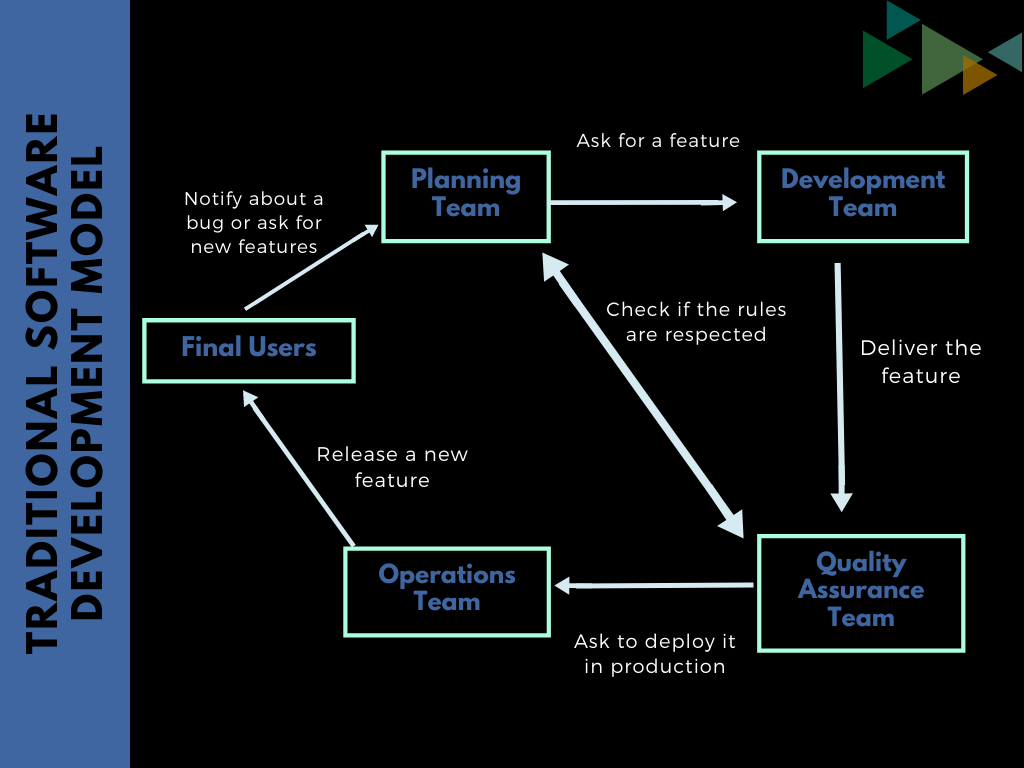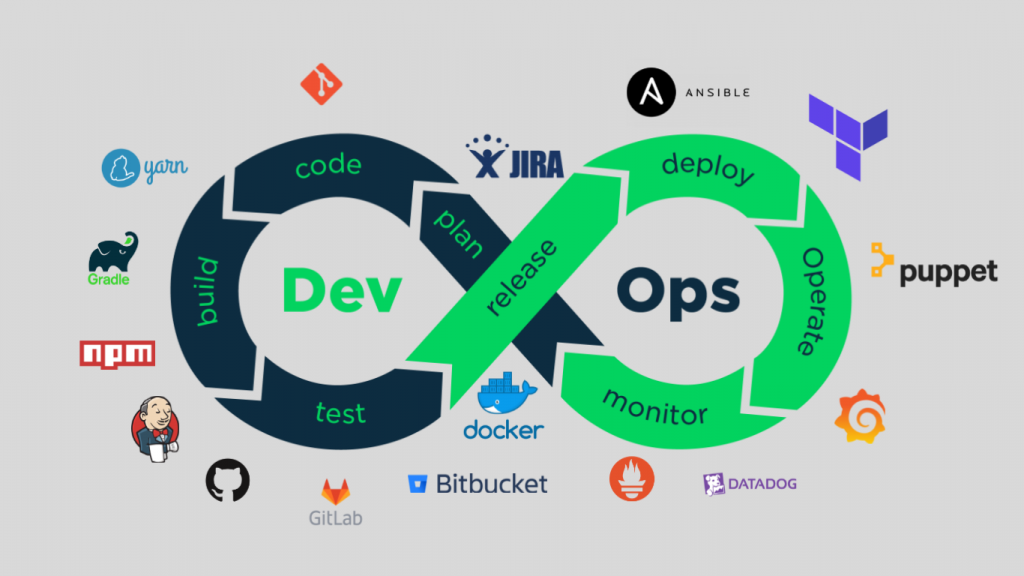DevOps is the merging of the development and operations team through the usage of various tools which automate the process. It is a set of tools used at every step of a project in order to automatically build it, test it, watch it and maintain it, allowing teams to become more efficient in delivering and ensuring stable releases.
Traditional Software Development Model
Historically, the traditional software development model is manual and time-consuming.
- The planning team will ask for a feature from the development team.
- The development team will then deliver the feature to the Quality Assessment (QA) team.
- Following those rules, the QA team had to test it and certify that it was valid, before asking the operations team to push those features into production.
- Finally, the users and a team of internal testers will use the application in real life. If a problem arises, the planning team will have to plan a new feature or a bugfix for the problem to be solved and the loop starts again.

Following this process could lead to the user waiting for days or even weeks before a feature or a bugfix could be seen in real life application.
DevOps, adopted from the Agile methodology, changes the way how traditional software development model is done. Nowadays, projects involve people from each team to come together to discuss on how they can work concurrently on this project with instant feedback and inputs from various points of view.
Tools for DevOps
In addition, the processes are now automated with the usage of different tools for each stage. Here are some tools which are used commonly:

- Plan

- Code

- Build



- Test




- Release

- Deploy


- Operate


- Monitor


The tools listed here are not exhaustive and some tools can serve a range of functions.
The idea of DevOps is still very new to people. Like all other tools, it takes time for it to be fully understood. But once the process of understanding is done, the community will find new ways of using it. Moving forward, the next step after DevOps might be the creation of a ‘super tool’ which is able to take care of several tasks instead of having tools for each step.






